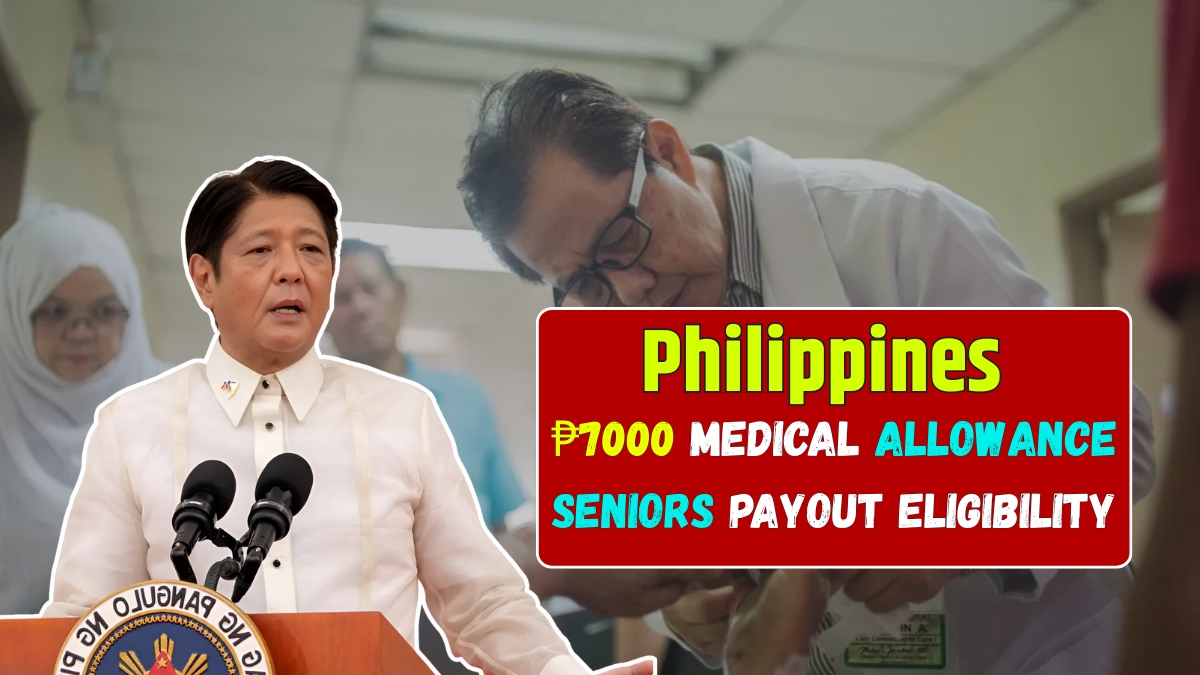Join on WhatsApp
Get the latest updates directly on WhatsApp – motivation, news & more!
Healthcare remains one of the most pressing needs for senior citizens in the Philippines. With rising medical costs, access to regular check-ups, medicines, and hospital care has become a financial challenge for many elderly Filipinos. To provide relief, the government has announced a ₱7,000 medical allowance in 2025 for qualified seniors. This initiative aims to ease financial burdens and ensure that older citizens receive the treatment and support they need.
This article explains the details of the ₱7,000 medical allowance, who qualifies, how payouts are distributed, and the scheduled payment dates.
Why the Medical Allowance Matters
As the cost of living increases, many seniors struggle to afford essential healthcare. Medicines for chronic conditions such as hypertension, diabetes, and arthritis often take up a large portion of monthly budgets. Hospital visits and emergency care add even more pressure.
The ₱7,000 medical allowance is designed to address these challenges by offering direct financial assistance. It provides seniors with additional resources to purchase medicines, pay for medical check-ups, and support their health-related needs.
Who Qualifies for the ₱7,000 Medical Allowance
Not all elderly citizens are automatically eligible. The program has clear requirements to ensure that the allowance reaches those most in need. Generally, eligibility includes:
- Filipino citizens aged 60 years and above.
- Registered under the national social pension program or other government senior assistance programs.
- Belonging to low-income households or classified as indigent seniors by the Department of Social Welfare and Development (DSWD).
- Not receiving sufficient pension benefits from other sources such as SSS or GSIS, or having limited financial support.
The allowance is intended to prioritise seniors who are most vulnerable and require government support to manage their health expenses.
How to Apply for the Allowance
Seniors who believe they qualify must apply through their local government units (LGUs) or designated DSWD offices. The application process usually requires:
- Valid government-issued identification such as a senior citizen ID.
- Proof of residency.
- Certificate of indigency or household income assessment from barangay officials.
After submission, applications are reviewed by the LGU and DSWD to confirm eligibility. Once approved, beneficiaries are notified and added to the payout list.
How the ₱7,000 Payout Is Distributed
The allowance is credited directly to beneficiaries through cash payouts at LGU centers, banks, or designated payout partners. In some areas, home delivery of benefits may also be arranged for seniors who are unable to travel.
To ensure transparency, payout schedules are announced publicly in advance. Beneficiaries must bring their identification and claim stubs during collection. In many cases, LGUs also organise special distribution days specifically for senior citizens to make the process smooth and efficient.
Payment Dates for 2025
While the government has yet to release exact nationwide schedules, the ₱7,000 allowance is expected to be distributed in quarterly payouts or as a lump sum depending on local implementation.
Typically, the DSWD and LGUs announce payout dates at the start of each quarter. Beneficiaries are advised to check official announcements through barangay offices, community bulletin boards, or the DSWD website. Staying updated ensures that seniors do not miss their scheduled collection.
Impact on Seniors and Families
The allowance is more than just financial assistance. For many seniors, it means peace of mind knowing that their medical needs can be addressed without causing stress to their families. Families, in turn, feel less financial strain as they share responsibility for elderly care.
This support also reduces the risk of untreated illnesses. With funds available for medicines and check-ups, seniors can manage chronic conditions more effectively and avoid costly hospitalisations.
Challenges and Considerations
While the program is a welcome development, challenges remain. Some seniors living in remote areas may face difficulties accessing payout centers. Others may need assistance with the application process, especially if they are unfamiliar with paperwork. To address this, LGUs and community volunteers play a crucial role in guiding seniors and ensuring they receive their benefits.
Another consideration is the sustainability of the program. As the senior population grows, funding will need to be continuously adjusted to meet demand. Transparent allocation of resources and efficient implementation are vital for long-term success.
Preparing for the Future
The ₱7,000 allowance highlights the importance of strengthening healthcare and retirement systems in the Philippines. Younger generations are encouraged to plan ahead for their own retirement and health expenses by contributing to pension programs and building savings. For now, the medical allowance serves as an essential lifeline for the elderly who need immediate support.
Conclusion
The ₱7,000 medical allowance in 2025 represents an important step toward caring for senior citizens in the Philippines. By offering financial aid for healthcare, it provides relief for seniors struggling with rising medical costs. Eligibility is focused on those most in need, ensuring fairness and effectiveness.
Seniors and their families are encouraged to stay updated on announcements from LGUs and the DSWD regarding application guidelines and payout schedules. For many, this program is more than just money—it is a sign of recognition, care, and respect for the contributions seniors have made throughout their lives.
As the Philippines continues to face the challenges of an ageing population, initiatives like the medical allowance are vital to building a society that values and supports its elderly members.




